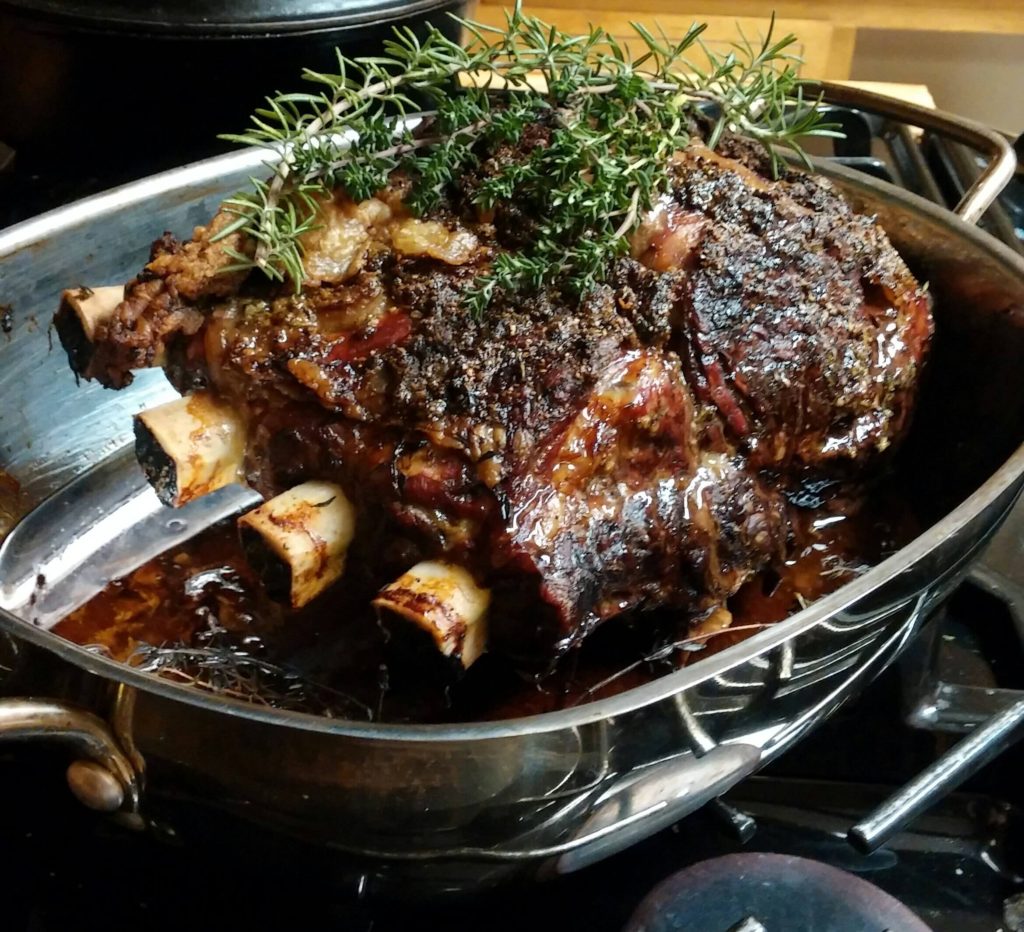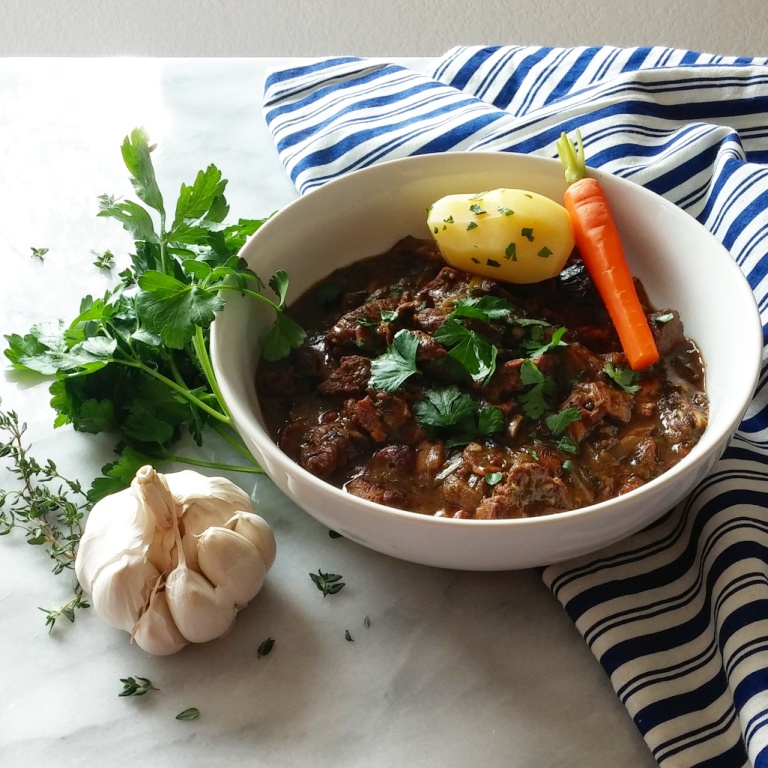Copyright 2016, by Jacqueline, all rights reserved
Herb Crusted Standing Rib Roast
Serves 10-12
How to cook a succulent roast, dripping with juicy and bursting with flavor? Look no more. Tantalize the senses and impress your guests with this easy to cook herb crusted roast.
The secret?
Butter. An herb butter rub seals in moisture and browns the exterior into a crackling crust.
And do yourself a favor.
Buy yourself a meat thermometer and never play the guessing game again – prodding, poking and cutting into the meat trying to determine if it is done. A thermometer is worth its weight in gold. Anxiety is banished forever.
Another secret?
Let the meat rest covered for 30 minutes before you carve it. The meat will cook further and the juice will stay in the meat, instead of escaping onto the plate. You get to relish each and every juice filled savory bite.
Essential Tools:
Roasting Pan with rack
Ingredients:
1 standing rib roast of beef (about 5 pounds)
20 cloves garlic peeled
1 TBS fresh rosemary leaves
1 TBS fresh thyme leaves
4 TBS softened butter
1 TSP salt
1/2 TSP coarse ground black pepper
Add 2 cups beef stock, wine, or water to bottom of pan (optional au jus)
Directions:
Remove roast from refrigerator two hours before cooking to warm to room temperature.
Herb Butter: Add garlic cloves, rosemary, thyme, salt and pepper to a small food processor. Whiz until finely chopped. Add softened butter and continue to process until herbs and butter are blended.
To Cook Roast:
Preheat oven to 450°F
Smear herb butter over top, down sides, and across bone section of roast. Salt and pepper fat side generously.
In a shallow roasting pan, place roast on rack, with fat side up and bones down. Insert a meat thermometer into center, but away from bones. Roast 20 minutes uncovered.
Reduce heat to 350°F. Continue to roast uncovered until thermometer reads 125°F for medium-rare, 135°F for medium, about 2 to 2.5 hours.
Cover loosely with foil and let stand 30 minutes before carving.
De-fat the pan juices and serve alongside the beef if desired.
Like what you see?
While this recipe is open to all, some are exclusive and available for subscribers only. Don’t miss out! Sign up and receive monthly recipes in your email box, future exclusive recipes, private Q&A’s, giveaways, blog post notices, and more!


